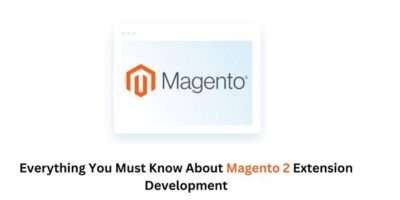In today’s rapidly changing business landscape, agility has become paramount for organizations striving to stay competitive. Companies are increasingly adopting Lean Portfolio Management (LPM) principles to navigate this dynamic environment. Rooted in lean thinking, LPM offers a structured approach to balancing innovation, efficiency, and strategic alignment across an organization’s portfolio of initiatives. In this blog post, we’ll explore the concept of LPM, its key principles, and how it enables businesses to achieve agility in their operations.
Understanding Lean Thinking
At the core of Lean Portfolio Management lies the concept of lean thinking. Originating from the Toyota Production System, lean thinking emphasizes the elimination of waste, continuous improvement, and delivering value to customers. It’s a mindset that prioritizes efficiency, flexibility, and responsiveness to change. Organizations aim to streamline processes, optimize resources, and enhance overall performance by applying lean principles.
The Need for Agility
In today’s digital age, businesses face unprecedented levels of uncertainty and disruption. Market dynamics shift rapidly, customer preferences evolve, and technological advancements reshape industries overnight. Traditional approaches to project and portfolio management fall short in such an environment. Static, rigid structures hinder adaptability and innovation, leaving organizations vulnerable to competitive threats.
Introducing Lean Portfolio Management (LPM)
Lean Portfolio Management offers a solution to the challenges of traditional portfolio management methodologies. It provides a framework for aligning strategy with execution, fostering innovation, and maximizing the flow of value. At its essence, LPM enables organizations to balance competing priorities while maintaining a relentless focus on delivering customer value.
Key Principles of Lean Portfolio Management
1. Visualize the Portfolio:
LPM begins with visualizing the entire portfolio of initiatives, including projects, programs, and investments. By creating transparency, stakeholders clearly understand where resources are allocated and how they contribute to strategic objectives.
2. Limit Work in Progress (WIP):
To prevent overburdening teams and ensure a steady flow of value, LPM advocates for limiting work in progress. Organizations can prioritize initiatives, reduce multitasking, and accelerate delivery cycles by setting explicit WIP limits.
3. Implement Lean Governance:
Traditional governance structures can impede agility by introducing unnecessary bureaucracy and delays. Lean governance emphasizes lightweight, decentralized decision-making processes that empower teams to make timely, informed choices.
4. Foster Continuous Feedback:
Feedback loops are essential for driving continuous improvement and adaptation. LPM encourages frequent feedback cycles, enabling teams to validate assumptions, course-correct, and pivot as needed based on market dynamics and customer insights.
5. Embrace Experimentation and Learning:
In a rapidly changing environment, experimentation is key to discovering new opportunities and mitigating risks. LPM promotes a culture of experimentation, where teams are encouraged to test hypotheses, learn from failures, and iterate toward success.
Achieving Agility Through Lean Portfolio Management
By embracing Lean Portfolio Management, organizations can achieve agility in several ways:
1. Adaptability:
LPM enables organizations to respond quickly to changes in market conditions, customer preferences, and competitive threats. By prioritizing flexibility and experimentation, businesses can adapt their portfolio of initiatives to seize emerging opportunities and mitigate risks.
2. Efficiency:
Lean principles drive efficiency by eliminating waste, reducing lead times, and optimizing resource utilization. Organizations can deliver value to customers more quickly and cost-effectively through continuous improvement and streamlined processes.
3. Innovation:
LPM fosters a culture of innovation by empowering teams to experiment, iterate, and explore new ideas. By providing the autonomy and support needed to pursue innovative solutions, businesses can stay ahead of the curve and differentiate themselves in the market.
4. Strategic Alignment:
One of the key benefits of LPM is its ability to align portfolio investments with strategic objectives. By visualizing the portfolio, setting clear priorities, and fostering collaboration, organizations can ensure that resources are allocated to initiatives that create the most value and advance long-term goals.
Case Study: Applying Lean Portfolio Management in Practice
Let’s consider a hypothetical example of a software development company adopting LPM principles to enhance agility:
Scenario: XYZ Software Inc. is facing increasing competition and customer demands for faster delivery of new features and updates. However, their traditional project management approach is struggling to keep pace with market changes, resulting in delayed releases and dissatisfied customers.
Solution: XYZ Software decides to implement Lean Portfolio Management to improve agility and responsiveness. They establish cross-functional teams aligned around specific customer segments or product lines, each responsible for delivering end-to-end solutions.
By visualizing its portfolio of initiatives using Kanban boards, XYZ Software gains real-time visibility into work in progress, bottlenecks, and dependencies. They implement WIP limits to prevent teams from taking on too much work at once, ensuring a steady flow of value and reducing lead times.
Through regular cadences of feedback and iteration, XYZ Software collects customer input, validates assumptions, and adjusts its product roadmap accordingly. They embrace a culture of experimentation, encouraging teams to test new features, gather data, and iterate based on user feedback.
As a result of adopting Lean Portfolio Management, XYZ Software experiences:
- Faster time to market for new features and updates
- Improved customer satisfaction and loyalty
- Greater alignment between business goals and portfolio investments
- Enhanced employee engagement and morale
Conclusion
In today’s fast-paced business environment, agility is no longer a nice thing to have—it’s necessary for survival and success. Lean Portfolio Management offers a proven framework for achieving agility by aligning strategy with execution, fostering innovation, and maximizing the flow of value. By embracing lean thinking principles and adopting LPM practices, organizations can navigate uncertainty, seize opportunities, and thrive in an ever-changing world.
In the relentless pursuit of agility, Lean Portfolio Management serves as a guiding light, helping businesses strike the delicate balance between stability and innovation, efficiency and adaptability—a true balancing act for the modern era.







